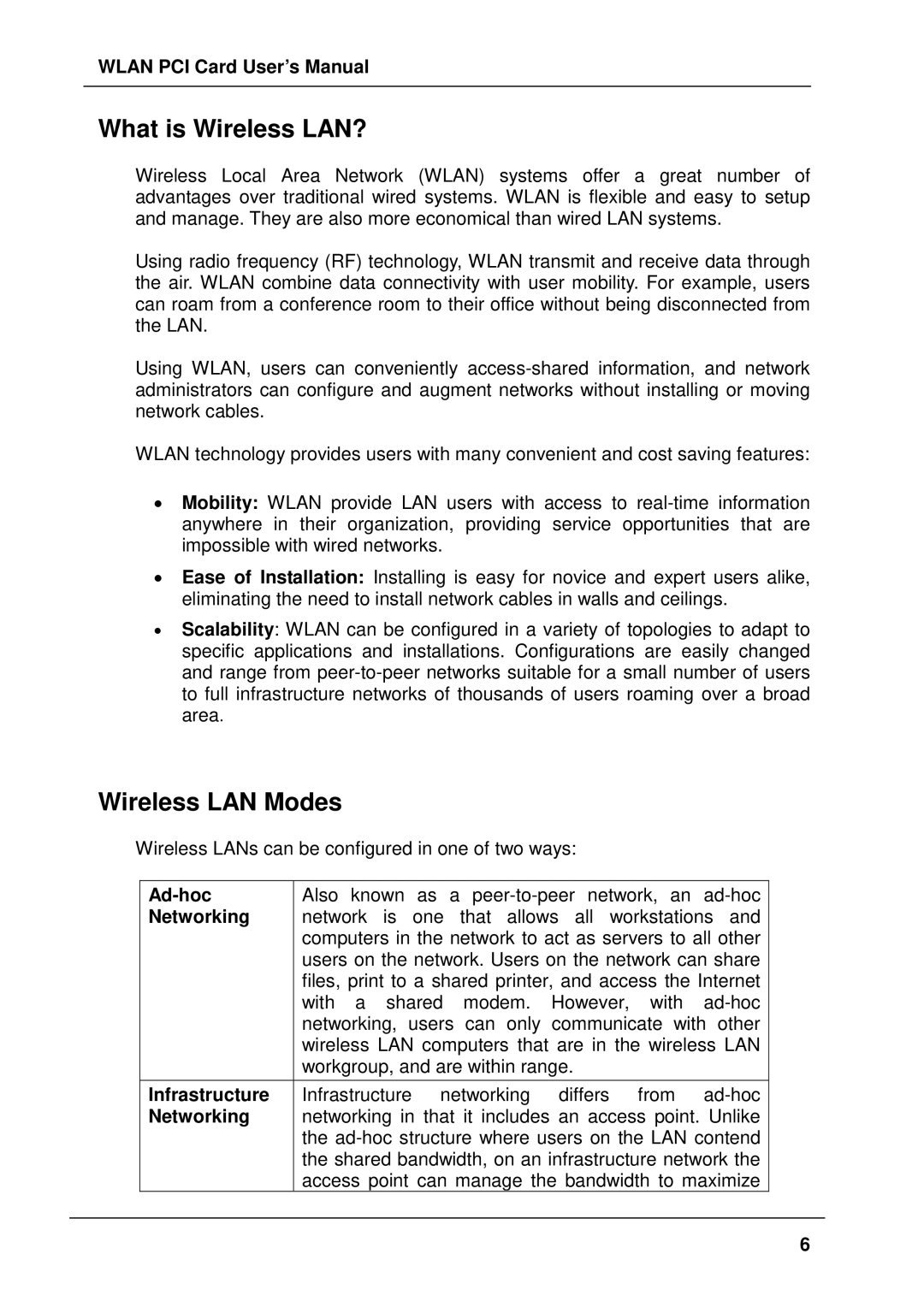
WLAN PCI Card User’s Manual
What is Wireless LAN?
Wireless Local Area Network (WLAN) systems offer a great number of advantages over traditional wired systems. WLAN is flexible and easy to setup and manage. They are also more economical than wired LAN systems.
Using radio frequency (RF) technology, WLAN transmit and receive data through the air. WLAN combine data connectivity with user mobility. For example, users can roam from a conference room to their office without being disconnected from the LAN.
Using WLAN, users can conveniently
WLAN technology provides users with many convenient and cost saving features:
•Mobility: WLAN provide LAN users with access to
•Ease of Installation: Installing is easy for novice and expert users alike, eliminating the need to install network cables in walls and ceilings.
•Scalability: WLAN can be configured in a variety of topologies to adapt to specific applications and installations. Configurations are easily changed and range from
Wireless LAN Modes
Wireless LANs can be configured in one of two ways:
Also known as a | |
Networking | network is one that allows all workstations and |
| computers in the network to act as servers to all other |
| users on the network. Users on the network can share |
| files, print to a shared printer, and access the Internet |
| with a shared modem. However, with |
| networking, users can only communicate with other |
| wireless LAN computers that are in the wireless LAN |
| workgroup, and are within range. |
Infrastructure | Infrastructure networking differs from |
Networking | networking in that it includes an access point. Unlike |
| the |
| the shared bandwidth, on an infrastructure network the |
| access point can manage the bandwidth to maximize |
6
